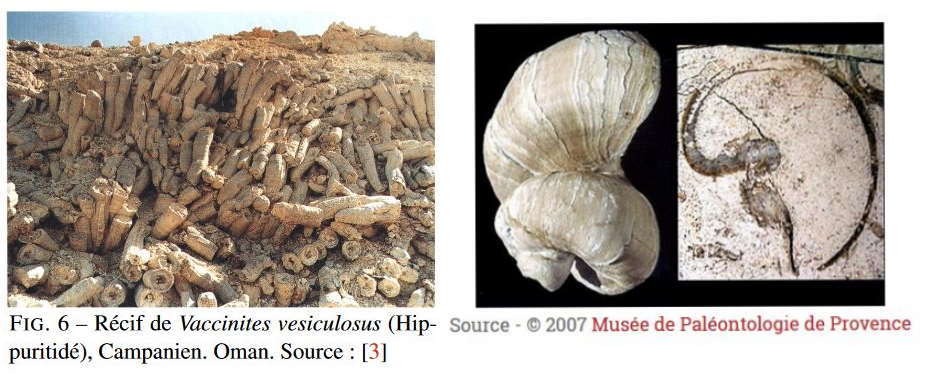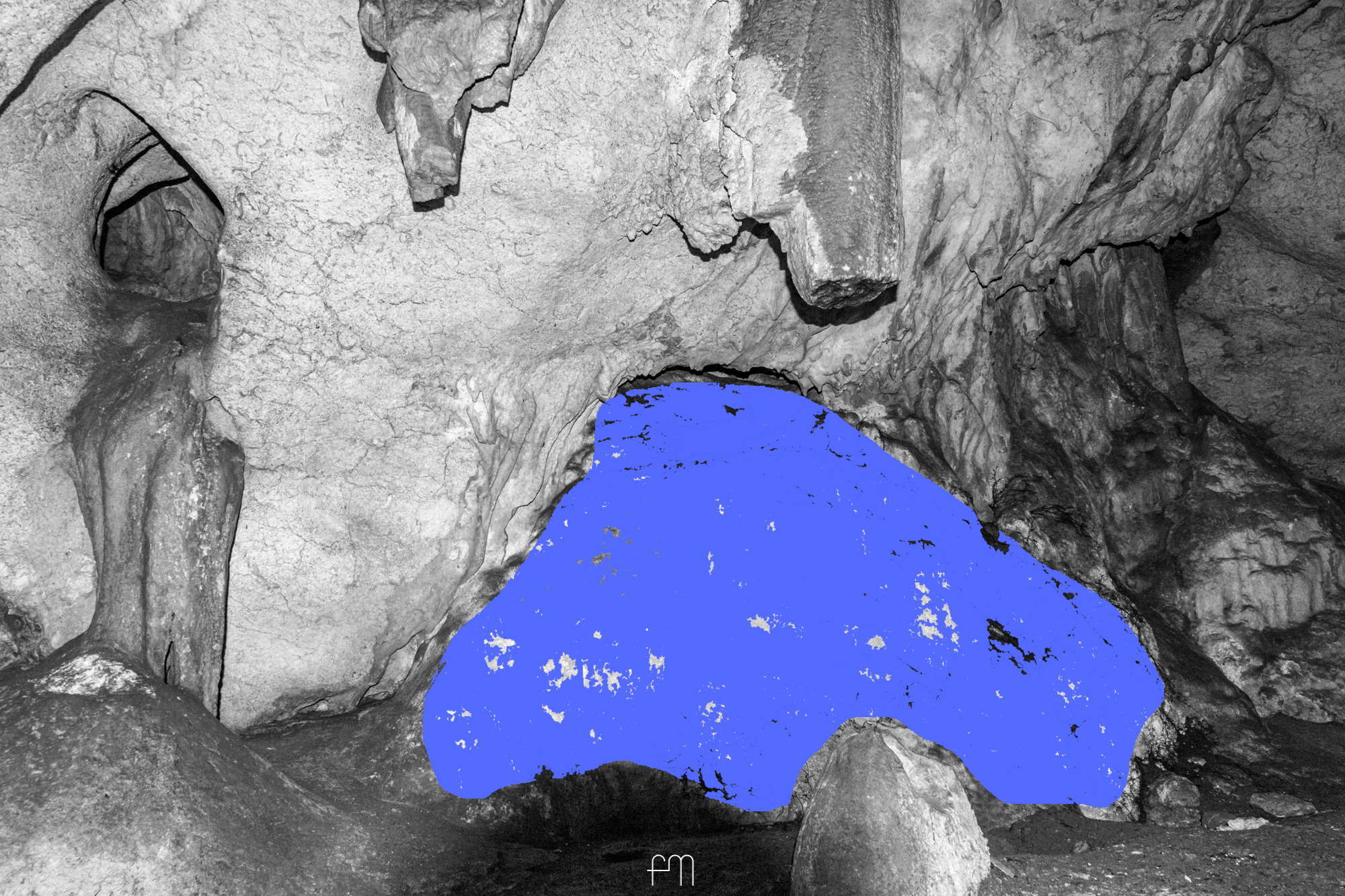Avertissement : Cette earthcache est souterraine. Prévoir une lampe assez puissante pour pouvoir examiner la paroi de la grotte. Un passage à 4 pattes (en plus de l’entrée) sera nécessaire pour atteindre la dernière salle.
Warning: This earthcache is underground. Provide a lamp powerful enough to be able to examine the wall of the cave. A passage on 4 legs (in addition to the entrance) will be necessary to reach the last room.
Les rudistes
Le Mont Bouquet est une zone où l’on trouve beaucoup de fossiles. Intéressons-nous à ceux nommés « rudistes ».
Mont Bouquet is an area where there are many fossils. Let's look at those called "rudists".

Des mollusques récifaux
Du nom savant de Hippuritoida, ces mollusques vivaient dans des eaux chaudes dont la profondeur n’excédait pas 5m. D’un mode de vie fixé, ils furent au début isolés puis se regroupèrent en colonies, jusqu’à constituer de véritables récifs appelés biohermes.
Ces bivalves sont caractérisés par une charnière à deux dents, une coquille épaisse dont la partie inférieure (par laquelle se fixait l’animal) peut prendre différentes formes selon les familles et la partie supérieure moins développée, est parfois formée d’une simple opercule.
Les rudistes sont apparus pendant le Jurassique supérieur il y a 145 millions d’années et ont disparu à la fin du Crétacé il y a 66 millions d’années.
From the scientific name of Hippuritoida, these molluscs lived in warm waters whose depth did not exceed 5m. With a fixed way of life, they were initially isolated and then gathered in colonies, until they formed real reefs called bioherms.
These bivalves are characterized by a hinge with two teeth, a thick shell whose lower part (by which the animal was attached) can take different forms depending on the family and the upper part less developed, is sometimes formed of a simple operculum.
Rudists appeared during the Upper Jurassic 145 million years ago and disappeared at the end of the Cretaceous 66 million years ago.

L’urgonien
L’accumulation des coquilles de rudistes et de coraux a conduit à la création de roches calcaires, appelées maintenant « fasciés urgonien ». Ce nom provient de la commune d’Orgon dans les Bouches du Rhône, où il a été observé et décrit par Alcide d’Orbigny en 1847.
La roche calcaire ainsi créée est épaisse et se présente à nous sous la forme de hautes falaises de couleur claire, qui ont été soulevées lors de la compression pyrénéo-provençale au Paléocène puis lors de la formation des Alpes.
The accumulation of rudist shells and corals led to the creation of limestone rocks, now called "Urgonian Fascia". This name comes from the commune of Orgon in the Bouches du Rhône, where it was observed and described by Alcide d'Orbigny in 1847.
The limestone rock thus created is thick and appears to us in the form of high, light-colored cliffs, which were raised during the Pyrenean-Provençal compression in the Paleocene and also during the formation of the Alps.

Envoyez-moi les réponses aux questions et loguez la cache sans attendre. Je vous contacterai en cas de problème.
Questions :
D’après le descriptif :
- Quel est le nom savant des rudistes ?
- Pourquoi pouvons-nous en voir sur le Mont Bouquet ?
Sur place : Entrez dans la grotte et avancez-vous jusqu’à la dernière salle.
- Observez la paroi du fond. Les fossiles sont-ils épars ou nombreux ? Sont-ils plus foncés ou plus clairs que la roche qui les entoure ?
- Retournez-vous et regardez attentivement la zone indiquée sur la photo ci-dessous. Y a-t-il des fossiles ici ? Quelle explication donnez-vous à ce phénomène ?
- Revenez à l’extérieur et observez la roche au-dessus de l’entrée. Voyez-vous des rudistes à cet endroit ? Quelle explication donnez-vous à ce phénomène ?

Send me the answers to the questions and log the cache immediately. I will contact you if there is a problem.
Questions :
According to the description:
1 - What is the learned name of the rudists?
2 - Why can we see them on Mont Bouquet?
On the spot : Enter the cave and go forward to the last room.
3 - Observe the back wall. Are the fossils scattered or numerous? Are they darker or lighter than the rock around them?
4 -Turn around and look carefully at the area indicated in blue in the photo upper. Are there any fossils here? What explanation do you give for this phenomenon?
5 - Go back outside and observe the rock above the entrance. Do you see any rudists there? What explanation do you give for this phenomenon?
Sources : Wikipedia, Infoterre, planet-terre.ens-lyon.fr, stepp.igpp.fr, lithotheque.ac-montpellier.fr